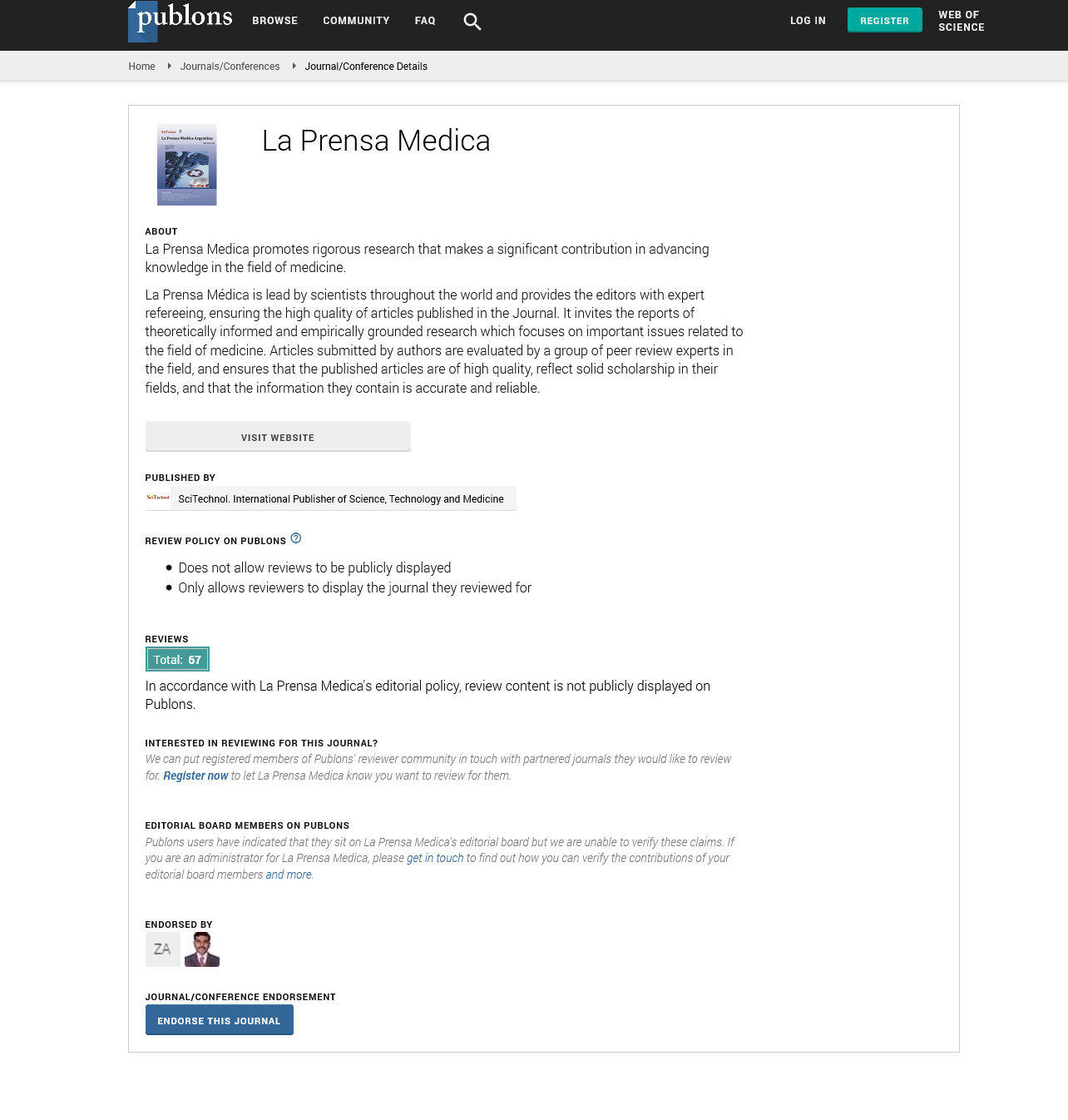Opinion Article, La Prensa Medica Vol: 109 Issue: 4
The Impact of Tumor Heterogeneity on Treatment Strategies
Matt Snodkeith*
1Department of Medical Epidemiology and Biostatistics, Karolinska Institute, Stockholm, Sweden
*Corresponding Author: Matt Snodkeith,
Department of Medical Epidemiology and
Biostatistics, Karolinska Institute, Stockholm, Sweden
E-mail: matt.snod5@ki.se
Received date: 30 October, 2023, Manuscript No. LPMA-23-111742;
Editor assigned date: 01 November, 2023, PreQC No. LPMA-23-111742 (PQ);
Reviewed date: 16 November, 2023, QC No. LPMA-23-111742;
Revised date: 23 November, 2023, Manuscript No. LPMA-23-111742 (R);
Published date: 30 November, 2023, DOI: 10.4172/2324-8955.1000684
Citation: Snodkeith M (2023) The Impact of Tumor Heterogeneity on Treatment Strategies. La Prensa Medica 109:4.
Abstract
Cancer, a complex and multifaceted disease, challenges medical researchers and practitioners alike. As our understanding of cancer evolves, it becomes increasingly evident that one size does not fit all when it comes to treatment. Tumor heterogeneity, the diversity of cell populations within a single tumor, is emerging as a pivotal factor in treatment response.
Description
Cancer, a complex and multifaceted disease, challenges medical researchers and practitioners alike. As our understanding of cancer evolves, it becomes increasingly evident that one size does not fit all when it comes to treatment. Tumor heterogeneity, the diversity of cell populations within a single tumor, is emerging as a pivotal factor in treatment response. Acknowledging this diversity is essential for devising effective therapeutic strategies that offer better outcomes for cancer patients.
Cause
Tumor heterogeneity arises from the accumulation of genetic mutations, epigenetic alterations, and micro-environmental influences that give rise to distinct subpopulations of cells within a tumor. This phenomenon not only complicates accurate diagnosis but also plays a crucial role in the varying responses of tumors to treatments. The realization that a single biopsy might not fully represent the genetic makeup of an entire tumor challenges conventional treatment paradigms. In treatment, the existence of diverse cell populations within a tumor can lead to a mixed response. Some cells may be more resistant to the treatment, leading to recurrence and metastasis. This phenomenon, known as Intra-Tumor Heterogeneity (ITH), underscores the need for therapies that target multiple aspects of the tumor simultaneously. Combination therapies, which address various cell populations and their vulnerabilities, are gaining momentum as a promising approach.
Recent advancements in technology
Single-cell sequencing and spatial transcriptomics, offer unprecedented insights into the intricacies of tumor heterogeneity. By deciphering the genetic makeup and interactions of individual cells, researchers can identify potential therapeutic targets that might have been overlooked by bulk sequencing methods. This knowledge paves the way for precision medicine, enabling treatment regimens tailored to the unique genetic signature of a patient's tumor.
Complex nature of tumor heterogeneity
The complexity of tumor heterogeneity arises as a challenge, it also opens doors to innovative treatment avenues. Immunotherapy, which harnesses the body's immune system to target cancer cells, has shown promise in treating tumors with high heterogeneity. The rationale behind this lies in the immune system's ability to recognize a wide range of antigens, targeting various cell populations within the tumor. As we uncover the mechanisms that govern immune response to heterogeneous tumors, immunotherapy could become an even more potent weapon in our anticancer arsenal. Moreover, the concept of tumor heterogeneity is transforming the landscape of clinical trials. Traditional trial designs might overlook potential responders if a treatment's efficacy is evaluated solely based on the majority cell population. Adaptive trial designs, which allow modifications based on interim data analysis, provide a flexible approach to accommodate the diverse responses that arise due to tumor heterogeneity.
Communication and collaboration between oncologists, pathologists, and researchers
This is an integral initiative to navigating the challenges posed by tumor heterogeneity. Integrating genomic data with clinical observations can guide treatment decisions that consider both the majority and minority cell populations. This approach, known as clonal dynamics monitoring, aims to detect shifts in the tumor landscape during treatment, enabling timely adjustments to therapy strategies.
Conclusion
Tumor heterogeneity is not an obstacle but an opportunity for innovative cancer care. Embracing this complexity is essential for devising treatments that are effective against the diverse cell populations within a tumor. The era of precision medicine, fueled by technological advancements, allows us to tailor treatments to the unique genetic makeup of each patient's tumor. Moreover, as we unravel the intricacies of immune response in heterogeneous tumors, immunotherapy could become a game-changer. To truly harness the potential of tumor heterogeneity in improving treatment outcomes, multidisciplinary collaboration and adaptive trial designs are paramount. As we delve deeper into the complex biology of cancer, we inch closer to a future where personalized therapies offer hope to patients faced with diverse and challenging tumors. The road ahead might be complex, but it is paved with possibilities to revolutionize the way we understand and treat cancer.
 Spanish
Spanish  Chinese
Chinese  Russian
Russian  German
German  French
French  Japanese
Japanese  Portuguese
Portuguese  Hindi
Hindi 

